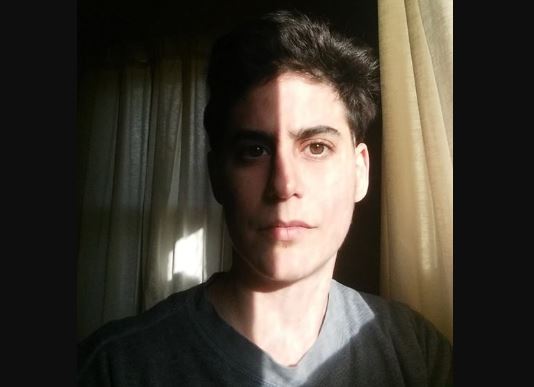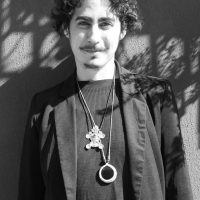*Editor’s Note: share your experience here. That’s what we’re here for–to be a mindful platform for learning and helpful change.
One child is playing with dolls and having them decorate their little plastic house, while the other is out riding a bike, scraping their knees, and exploring the neighborhood.
One is given a short haircut and put in baggy, rugged clothes, while the other is playing dress up in a sequin-covered dress. They look at each other with fascination peeping over the imaginary fence, remarking at the color of the grass, and wondering “What is it like to be the other?”
I’ve always occupied a middle ground, rejecting the cute, yet shallow pink cut-out playthings I was given, yet never gelled with sports and vicious competition. I drew pictures while sitting in my corner of the classroom, played with bugs and rocks in the yard, and took my dog out for walks.
I didn’t have many friends. My mother tried to help me by saying, “Just dress up and go to the mall, it doesn’t matter if you like doing it, it’ll help you feel included.”
For some reason I could not. It wasn’t worth it to me to pretend to be interested in something I found so dull. My inability to feign excitement was written all over my chronically unhappy face.
Now, I’m sitting in a cafe in Brooklyn with the fancy boys in heels and the butch women with their shaved heads and their sauntering dispositions. You might be hit with mixed signals, a composite of characteristics that short circuit expectations and lead to cognitive dissonance. We expect certain things to line up. We expect to be able to make a coherent picture, one that fits with what we know. We’ve learned the necessary categories, so what’s with this defiance?
Alright here’s my question: What is Gender?
That’s simple right? Just have someone take off their pants and all will be revealed?
There are some people who like to keep it simple and reduce identity down to a sexual binary, regarding any trespass as threatening.
However, this is incorrect even from a purely biological standpoint. Intersex is not a wholly uncommon phenomena when taking into account not only external genitalia but internal and chromosomal variations. Old statistics would have you believe that the condition of being intersex is extremely rare, present in .05 percent of the population, but the new number is approximately 2 percent and possibly as high as 5 percent. That high number means 1 in 20.
I was shocked to discover this. This means that upon glancing around my crowded cafe surroundings, I’m likely to be seeing someone who fits the description. It could even be me.
But that isn’t even gender, that is biological sex.
Biological sex is often misunderstood as a person’s gender—it is actually a completely different concept.
Sometimes people will also conflate gender with sexuality. There have been times when I’ve told someone I was transgender and they replied, “Oh I’m okay with gay people!”
Each time it was a legitimately innocent remark founded in a basic misunderstanding. Your gender has nothing to do with your sexual preferences.
Gender is an even trickier concept. I’m not sure we can even define it. For some it is strict and imposing, for others it’s a playground of expression. For some it exerts itself heavily, for others it’s barely apparent, if existing at all.
It gets into personal and political layers of identity, discrimination, and subtle variants of perception. It cites social baggage and is in the process of developing a vast dialect of acronyms of definitions.
Currently there are 72 recognized genders. I am AFAB, assigned female at birth, Bigender, having the quality of switching between two specific gender identities, and Trans Male, identifying as being more masculine leaning than my birth certificate tells you.
But, I’m only using this label to communicate within the trend. We need some way of speaking, of trying to approximate inner experience, because behind each individual label is a deeply personal journey filled with nuance and struggle.
Perhaps we can think of gender as a set of ideas deeply ingrained in society, as well as a personal reaction and stance taken among them, an interplay of expectations and perceptions, rigidity with rebellion, rediscovery, and transmutation.
In general, I see there are many approaches to redefining basic gender ideas, and it’s intriguing how they can overlap and inform each other.
One approach is to widen the two categorical binary genders (known as cisgender) to include the possibility of more and more characteristics. For example, there are women who have hirsutism, the ability to grow facial hair, who consider themselves to be cisgendered females. For them this is a natural characteristic and not a form of gender bending at all. They embrace these characteristics, usually viewed as male, as a wholesome part of womanhood.
Likewise, feminism sought to level the playing field by making the strong willed, the intellectual, the athletic all available under the wide banner of what it meant to be female.
In the 60s, men took back their long hair and dressed in colorful flowing clothing. At first it was shocking. Now does anyone think twice about a man having long hair?
Men can also have any number of characteristics such as gynecomastia, the ability to grow breasts, and still identify completely as cisgendered male. For them, all these characteristics belong to being male; it is only a social construct that informs them they aren’t “right.”
In this way, the categories widen and begin to overlap further and further, perhaps until they envelope each other entirely.
There are others, those who identify as nonbinary, who reject the idea of there being two categorically different genders entirely. For them, it is a spectrum and there is no need to identify with one or the other fictional boxes we’re usually placed in. Ironically, although this appears to be the opposite of the first approach, that of broadening cisgender definitions, the result can be similar.
The main difference is internal and ideological, the rejection of identifying as either male or female within themselves. No binary exists beyond a mental construct and they refuse to abide by that construct. These people choose to express themselves however comes and feels naturally to them. They can choose to use gender neutral pronouns (they, them) or not, picking from whatever feels comfortable at the time. They can change and shift, choosing to identify as genderfluid, bigender, or agender, which means not relating to having gender characteristics at all.
Transgender is the word that is used to denote one who identifies as a gender they were not assigned at birth.
This term, one that a few decades ago pointed to a very specific, “men transitioning to become women” or “women transitioning to become men,” has now become a much larger umbrella term.
This is important information for those who wish to be allies: How you look does not dictate which gender you are—one can identify as transgender without any medical or even social changes. It is an internal feeling of being, first and foremost.
Nonbinary people also can identify as transgender, in that what they identify with being is different from the stamp on their birth certificate.
Transgender can also be used when one is thoroughly medically and socially transitioning from one side of the binary system to the other; these people would most likely (but I bet there are exceptions!) not identify with being nonbinary. They see a binary and they feel like they are most suited to the other side. But the trick is, it’s in the mind.
Someone could be agender, not identifying with having gendered characteristics and transition in a way that, from the outside, appears to be male to female. Someone could be androgynous “looking” and identify with being cisgendered.
For many years when I thought about my own gender, I assumed I couldn’t possibly be male because I am in touch with my emotions. It wasn’t until recently I unmasked this hideous idea and realized it’s oppressive from every angle.
Even though I was raised as female, I had absorbed it and used it against my masculine self. Dismantling the system of oppression is something we all want, be it those who broaden what it means to be male and female, those who see the world and themselves as nonbinary, or those who relate to something other than what’s on their birth certificate.
If you’re feeling confused at this point, I want to let you know it’s all okay!
Really, it’s confusing because it is—we’ve had enough of the two boxes and having to snip our personalities to fit. It’s just not fun for most of us to dwell in these mental cages like pacing zoo animals, but the path through the wilderness isn’t clear for most, if any of us.
Overall, I think this time of self-reflection, play, and acknowledgement of conditioning is beneficial for our (hopeful) development as a species. A good approach is not to worry about getting it “right,” but to engage in the exploration.
You can ask yourself questions such as:
>> How do I see myself, and how do I feel inside?
>> Is there any characteristic I wish to embody that I thought belonged exclusively to the other team?
>> If I wasn’t afraid of people’s judgments, what would I want to look like?
Let me try to lend reassurance that asking yourself questions such as these is totally safe. Knowing how you feel and what you’d like to embody is always positive, regardless of what actions you take. Nobody needs to take any action. Nobody needs to conform to what is expected of their perceived gender role and nobody needs to try to be different or force things that are uncomfortable.
Take a breath, relax, recognize that messing up will likely happen a few times. What counts is the effort, the effort we put in toward understanding ourselves and understanding the people around us.
~
Bonus: Emily Quinn, The way we think about biological sex is wrong
~












Read 4 comments and reply